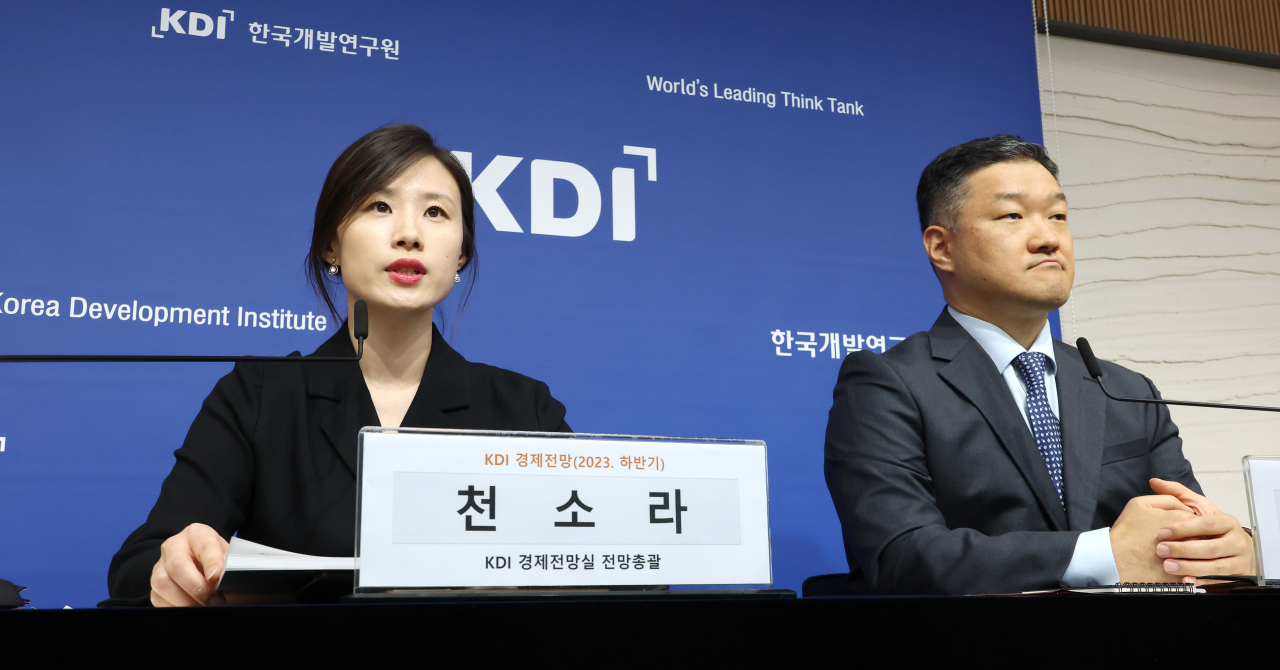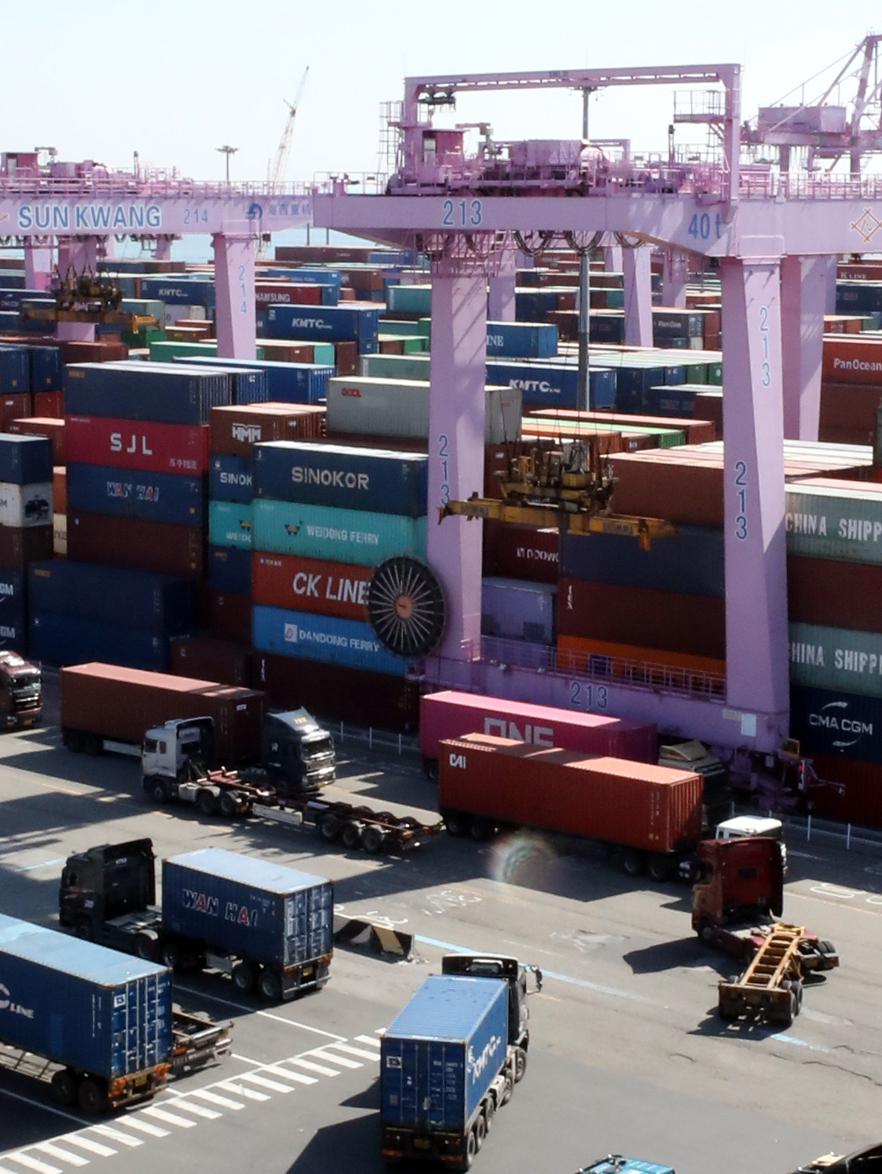KDI slashes 2024 growth to 2.2%
Without structural reform, economy projected to fall to sub-2% growth in five years
By Im Eun-byelPublished : Nov. 9, 2023 - 15:52

The state-run Korea Development Institute brought down the economic growth forecast for 2024 to 2.2 percent and 1.4 percent in 2023, slashing 0.1 percentage point each from the previous projections made in August, citing slowed growth of private consumption stemming from high rates.
The local economy will show a gradual recovery backed by exports next year, yet the pace will be limited due to the slowdown in the domestic consumption growth, following persistently high rates. Korea's gross domestic product will grow by 2.2 percent in 2024 on-year, according to a forecast released by the think tank on Thursday.
“High rates have prolonged for longer than initially expected in August, along with the increase in market interests,” said Jung Kyu-chul, director of the office of macroeconomic analysis and forecasting at the KDI, at a press briefing held Thursday.
“It is hard to say next year’s 2.2 percent growth rate is ‘strong.’ This is a rebound from the ‘weak’ to ‘intermediate,’” Jung said. "The Korean economy will recover at a very gradual pace."
The 2.2 percent forecast is the same as the projection made by the Bank of Korea and the International Monetary Fund, while lower than the government’s 2.4 percent. It is slightly higher than the Organization for Economic Cooperation and Development’s projection at 2.1 percent.
An exports rebound, especially in the chips industry, will be the main driver to lead the recovery of the Korean economy, according to the KDI. Exports are expected to grow 3.3 percent next year, while imports surge by 3.4 percent.
Yet despite the recovery, this year’s growth rate will remain at 1.4 percent, under the think tank’s expectation. This is the same as that of the government, central bank and IMF.
Meanwhile, private consumption next year is likely to grow at 1.8 percent, down 0.6 percentage points from the August forecast, under the assessment that spending on goods will be slow due to aggressive monetary tightening, as well as equipment investment.

On the contrary, regardless of the economy still far from making a full recovery, inflation is yet to wane.
The think tank projects inflation to grow at 2.6 percent in 2024. Though this is significantly lower than the 3.6 percent cited for this year, the estimates for both 2023 and 2024 are higher by 0.1 percentage point from the August projections, reflecting recent volatility in international oil prices.
The KDI further stressed that macroeconomic policies should be maintained under a restrictive stance for a while to bring down inflation.
"We do not see the need to change the current level of interest rates," Jung said. The BOK has been maintaining its key rate at 3.5 percent since February. “Yet, there is no immediate need to strengthen the level of restrictiveness in the policies.”
The KDI warned of heightened geopolitical tension from the Israel-Hamas war and the potential collapse of China’s real estate economy, saying they could bring down the growth of the Korean economy.
Jung mentioned the need for the structural reform of government expenditures as public spending has been on the rise due to an aging society.
“After some five years, it will be natural for the Korean economy to see (yearly) growth in the 1 percent range,” Jung said. “Without proper structural reform, the decline in the growth rate will be faster.”



















